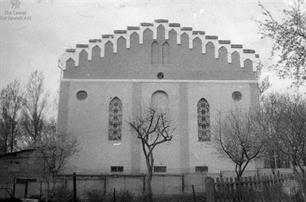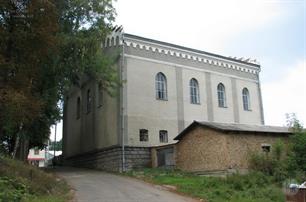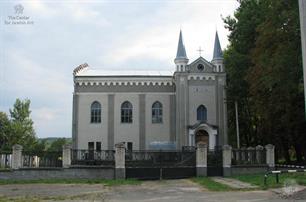Dolyna
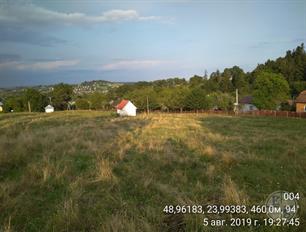 |
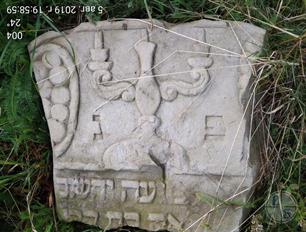 |
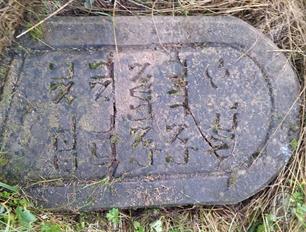 |
| Jewish Cemetery in Dolyna, 2019 | ||
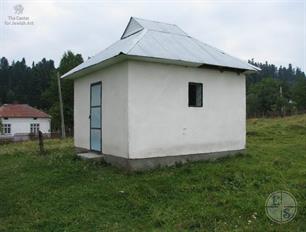 |
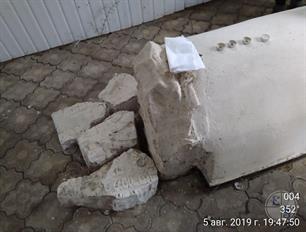 |
 |
| Ohel of Rabbi Moshe ben Dan Shoham in the Jewish Cemetery, 2019 | In the ohel | Second ohel in the cemetery, without name |
Sources:
- Virtual Shtetl. Dolyna
Photo:
- Vladimir Levin, Jewish Galicia and Bukovina N.P.O. Published by Center for Jewish art
- Jewish Cemeteries Initiative. Dolyna Jewish Cemetery
- Virtual Shtetl. Dolyna
Photo:
- Vladimir Levin, Jewish Galicia and Bukovina N.P.O. Published by Center for Jewish art
- Jewish Cemeteries Initiative. Dolyna Jewish Cemetery
Kalush district, Ivano-Frankivsk region
The first Jewish families started to settle in Dolyna in the 16th century. The profitable salt trade attracted new settlers to the town and resulted in the rapid growth of the Jewish community. The town’s owners protected the local Jewish population but Jewish merchants constituted competition for the burghers. The earliest documents regarding the community date back to the 17th century.
In the 19th century, the town became an important centre of Hasidism, partially thanks to the activities of Rabbi Issachar Berisz Eichenstein (d. 1886), son of Tzaddik Yitzchak Icchak Eichenstein from Zhydachiv.
At the end of the 19th century, immigration to the United States increased in the aftermath of the economic crisis.
In the 19th century, the town became an important centre of Hasidism, partially thanks to the activities of Rabbi Issachar Berisz Eichenstein (d. 1886), son of Tzaddik Yitzchak Icchak Eichenstein from Zhydachiv.
At the end of the 19th century, immigration to the United States increased in the aftermath of the economic crisis.
The town suffered major damage during WWI. In the first phase of the conflict, the Austrian troops withdrew and the front was located near the town. Dolyna was plundered and largely destroyed under heavy fire.
In October 1914, Russian troops captured the town. Russian privates tormented the local Jews. The number of Jews in the town fell from 2,654 in 1900 to 2,014 in 1921.
During World War II, Dolyna was occupied first by the Soviets (September 1939 – June 1941), then the Hungarians (from 2 July 1941), and eventually by Germans, who ordered to establish the Judenrat and put all Jews under the regime of a labour camp.
At the end of July 1942, nearly 3,000 Jews were murdered by the Germans and buried in mass graves dug up at the local cemetery.
A group of ca. 50 Jews joined a partisan unit, but only five of them survived.
In October 1914, Russian troops captured the town. Russian privates tormented the local Jews. The number of Jews in the town fell from 2,654 in 1900 to 2,014 in 1921.
During World War II, Dolyna was occupied first by the Soviets (September 1939 – June 1941), then the Hungarians (from 2 July 1941), and eventually by Germans, who ordered to establish the Judenrat and put all Jews under the regime of a labour camp.
At the end of July 1942, nearly 3,000 Jews were murdered by the Germans and buried in mass graves dug up at the local cemetery.
A group of ca. 50 Jews joined a partisan unit, but only five of them survived.

- Home
- Shtetls
- Vinnytsia region
- Volyn region
- Dnipro region
- Donetsk region
- Zhytomyr region
- Zakarpattia region
- Zaporizhzhia region
- Ivano-Frankivsk region
- Kyiv region
- Kropyvnytskyi region
- Luhansk region
- Lviv region
- Mykolayiv region
- Odessa region
- Poltava region
- Rivne region
- Sumy region
- Ternopil region
- Kharkiv region
- Kherson region
- Khmelnytskyi region
- Chernihiv region
- Chernivtsi region
- Cherkasy region
- Crimea
- Synagogues
- Cemeteries
- Objects & guides
- Old photos
- History
- Contact
Jewish towns of Ukraine
Jewish towns of Ukraine
My shtetl
My shtetl
Donate
